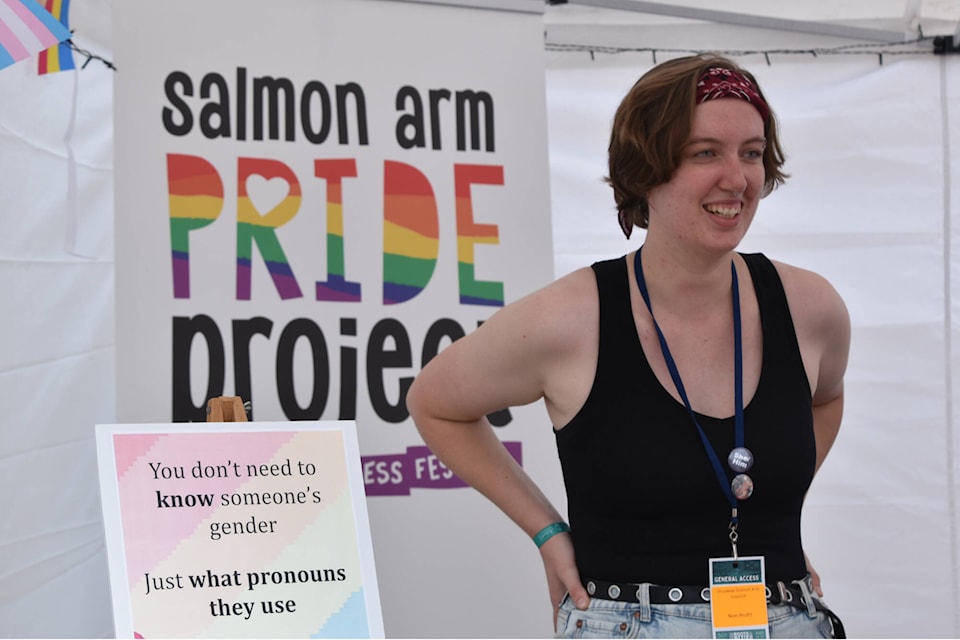If you are confused about gender, sexuality and pronouns, a former Salmon Arm resident has created pamphlets to help.
Layla Kutschker created three pamphlets, the first, ‘An introduction to identity – gender, sexuality and pronouns.’
“I’ve always thought art is a good way to introduce people to concepts. I thought the idea of pamphlets as portable would be a good way to introduce them.”
The pamphlets contain short pieces of text with drawings of characters, all created by Kutschker, so people could be introduced to them.
“Give people an idea that gender and sexuality are unique to each person and intersect in different ways for each person.
“Everyone’s relationship with their own identity is different too.”
She said she thinks a lot of people get caught up in what they’ve heard.
“Oh, so-and-so is straight so they can’t be dating someone who is non-binary.”
One character in the Introduction to Identity pamphlet is Willow.
“I’m a lesbian and asexual. So, I feel romantic attraction to other women. Because I’m also asexual, I don’t feel any sexual attraction at all. This doesn’t mean I don’t love or don’t want a relationship, but some asexual or aromantic people might feel like that. I use she/her pronouns, but I don’t mind other pronouns, too.”
Kutschker said just because there’s a definition doesn’t mean there are some kind of strict limitations.
“Each person has their own identity and it all interacts differently.”

The other two pamphlets are: “Let’s talk about pronouns” and “How to be a good ally.”
Answering the question, what are pronouns?, the pamphlet states “pronouns are indicative but not exclusive to your gender identity.” The pamphlet includes the suggestion: “Remember to be kind, and the rest will come naturally.”
Kutschker said ‘How to be a good ally’ took her the longest and might be the best in that it contains a wide range of information that overlaps into other areas. It includes insights on such topics as using respectful language, asking for pronouns, creating a safe space and learning terminology.
Being kind is included in this pamphlet too.
“Be nice, not only to your LGBTQ friends, but also to other allies who are learning. Remember that it’s not a competition to see who is the best ally.”
One character asks for an ally’s commitment.
“Being an ally is about fighting every day for your 2SLGBTQ friends and family, so we can continue to grow towards a better and safer world.”
The pamphlets are available at the Salmon Arm Arts Centre. Kutschker said a friend who worked at the high school distributed some there and Kutschker staffed a booth at the Roots and Blues Festival where they were on display.
“It has been a really good positive reaction,” she said.
Kutschker noted that a lot of people want to be educated but they don’t like to be told.
“People want to learn but then somebody walks up to them and starts lecturing and they close down… I think a pamphlet is a step, a start, a jumping-off point.”
Read more: Support for Salmon Arm’s Pride Project Festival delights organizers
Read more: Loud and Proud Celebration kicks off Salmon Arm Pride Project Arts & Awareness Festival
martha.wickett@saobserver.net
Like us on Facebook and follow us on Twitter and subscribe to our daily newsletter.
